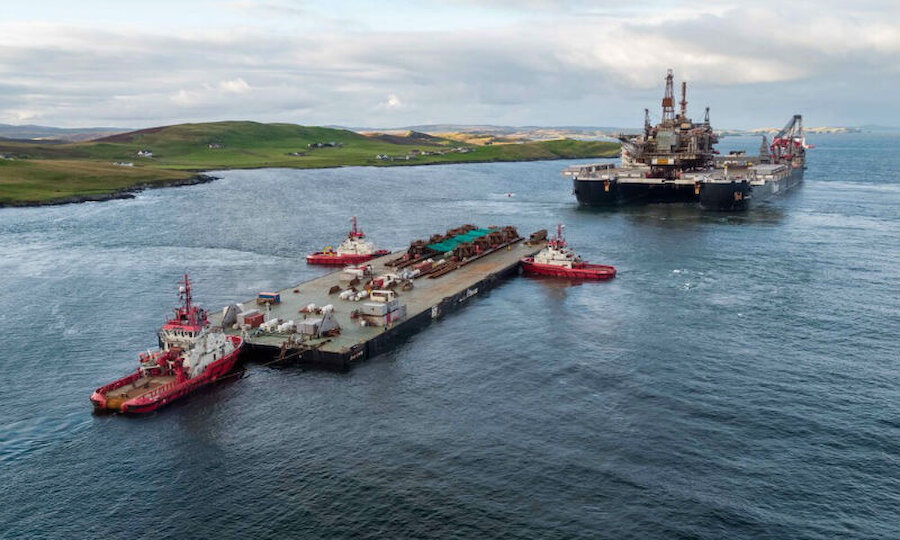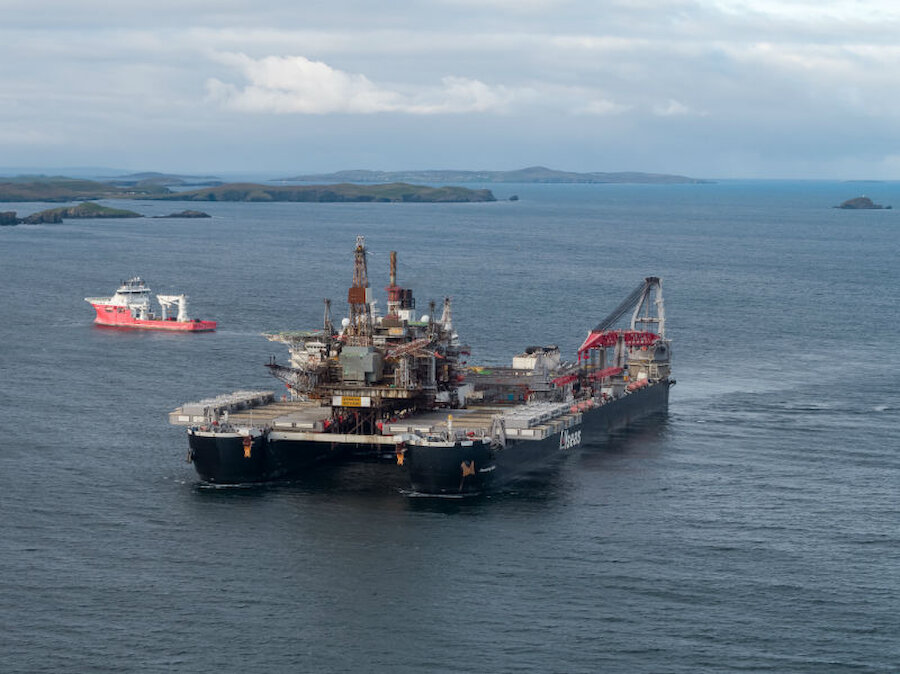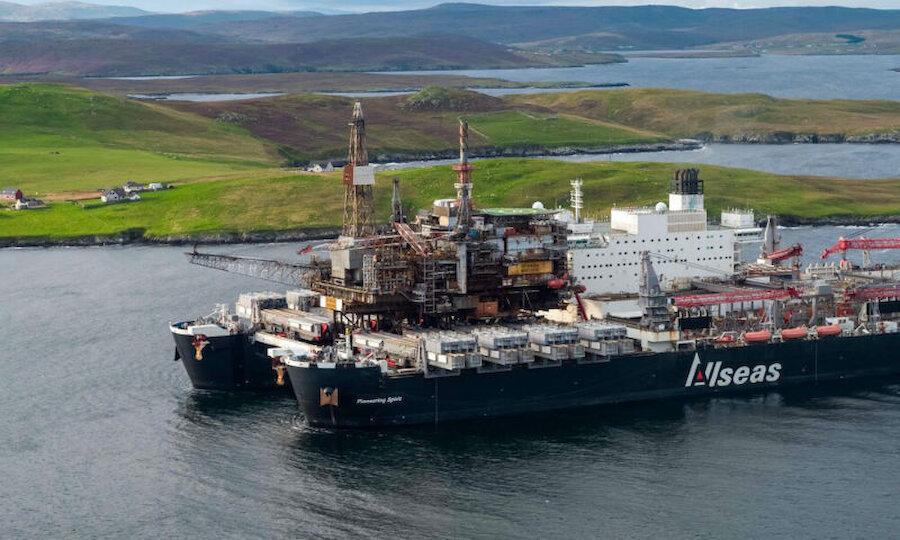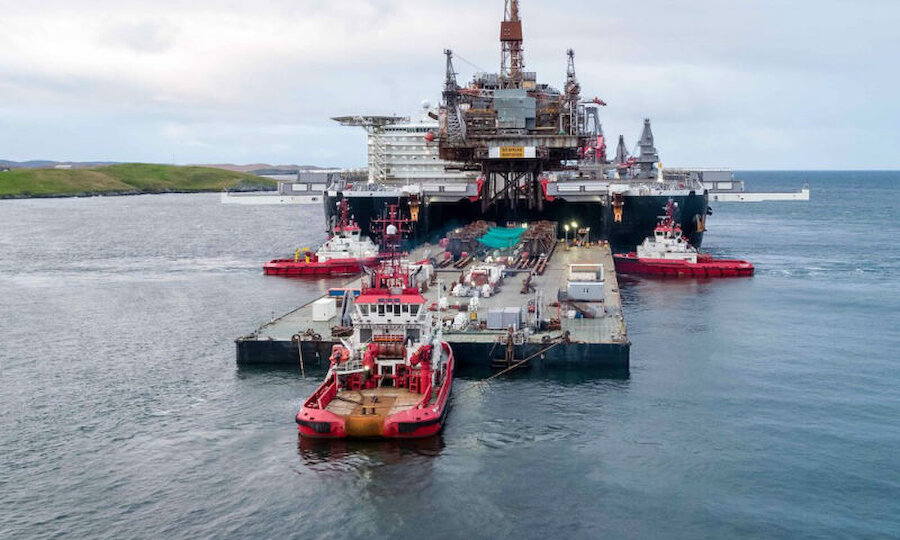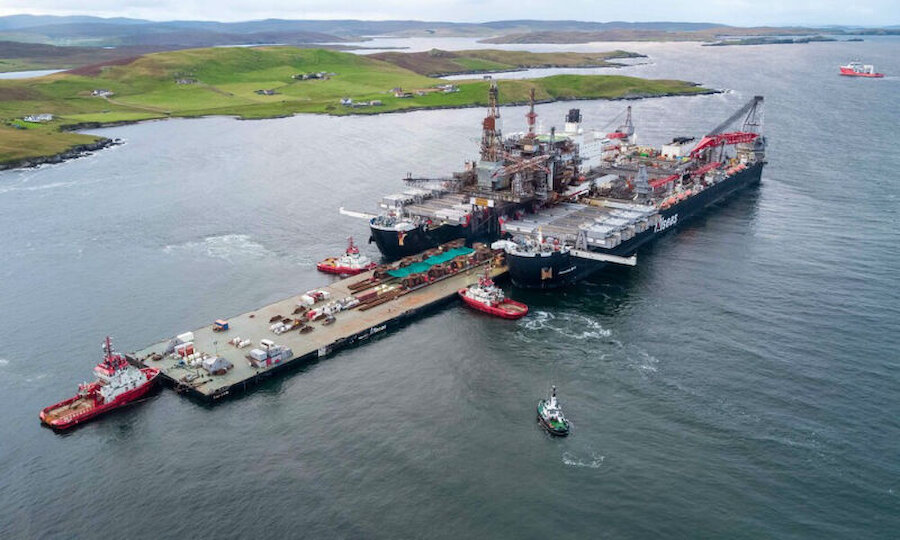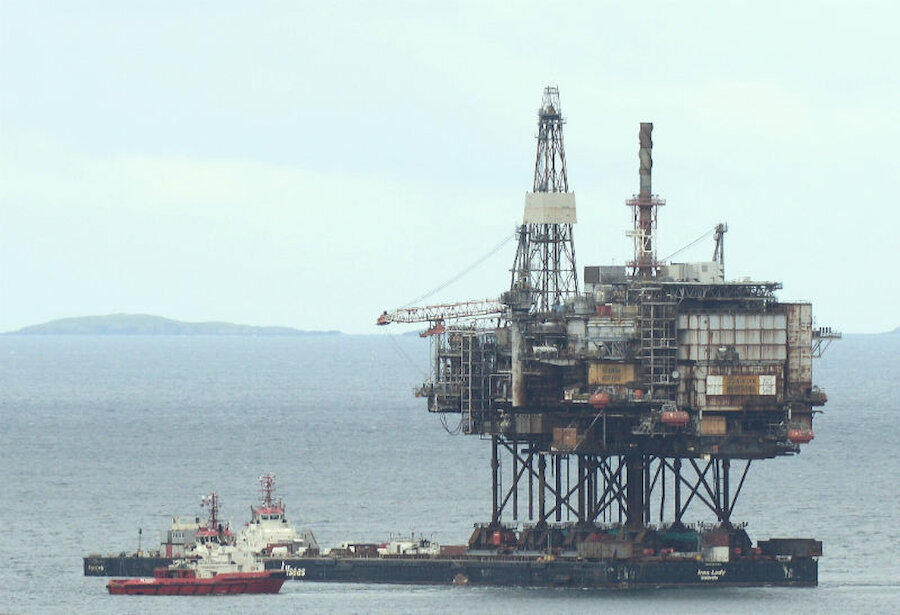The decommissioning of the many North Sea oil production platforms presents a challenge. They’re huge, heavy structures, so how is it done? People in Shetland have just had an opportunity to find out the answer to that question.
The port of Lerwick has identified oil platform decommissioning as a business opportunity and some work has already been undertaken. However, the project now under way, which involves dealing with the redundant Ninian North platform, represents a step change in scale.
On Friday, 28 August, local residents and visitors were greeted by the sight of the world’s largest construction vessel, Pioneering Spirit. The huge ship can install or remove oil platforms with astonishing speed and efficiency.

